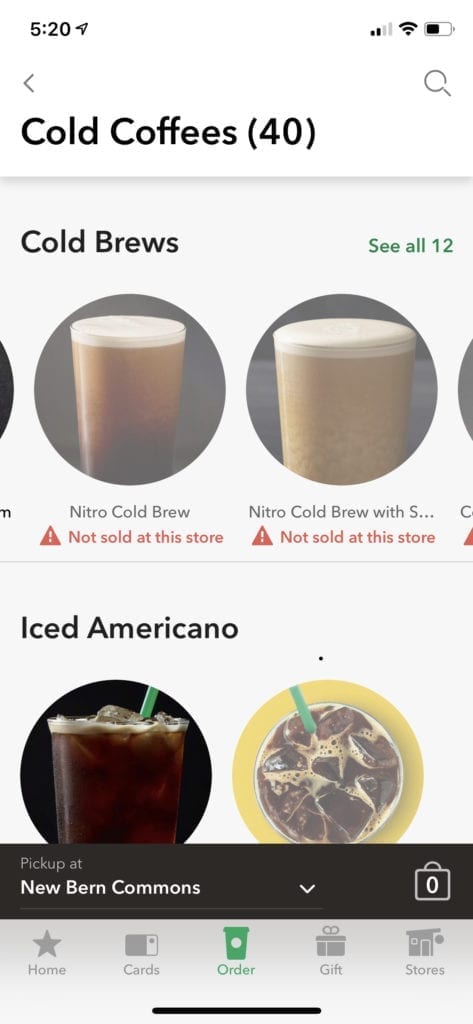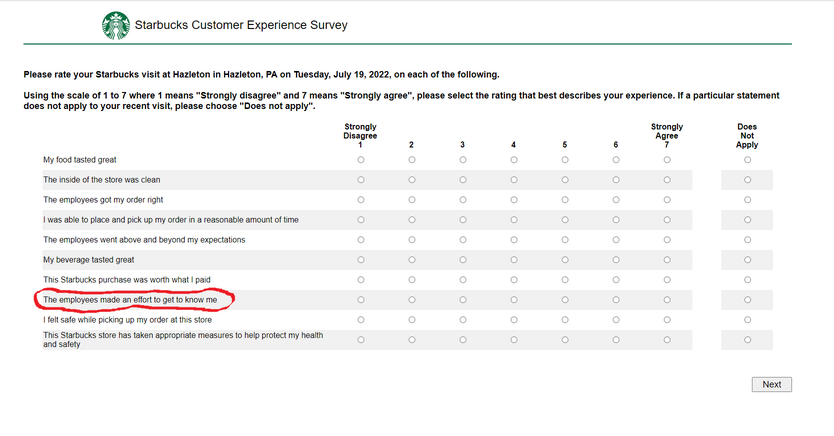
I’m definitely a Starbucks P1.
I give Starbucks a significant amount of TSDC (Time Spent Drinking Coffee.)
A look at my quarter hours with cappuccinos and lattes would show them spread out across dayparts. There’s no question the bulk of my drinkership happens in morning drive, but I’ve been known to cume middays, afternoons and even evenings with my Starbucks gold card.
But alas, something is amiss in my recent coffee-buying behavior, and I suppose when you spend a lot of time with data, you feel the need to analyze why a change in behavior is taking place.
What follows are my findings, as well as a thought about how coffee habits aren’t all that different from radio listening habits.
Many Starbucks P1s like me spend time on its app. The first thing you see when you open the Starbucks app is how many stars you’ve earned, and how many rewards you have to redeem. Starbucks has mastered the art of marketing automation, which means I regularly get reward opportunities (they’re called Star Dashes) customized to my consumption habits.
Ironically, it’s that very marketing automation that brought something to my attention recently. Although I’m still a Starbucks P1, I may be wavering to P2 territory. My Starbucks AQH (Average Quarter Hours) Share is down. I know my total TSDC isn’t down, but it is down with Starbucks.
What’s going on?
I have a sneaking suspicion that over the past year or so, I’ve experienced perceptual Starbucks brand erosion.
It’s not so obvious that I stopped going to Starbucks. I don’t have an overall negative opinion about the brand. But when I really stopped to think about it, I remembered a number of points of irritation that have just taken place in the last year.
- The Nitro Cold Brew Conundrum
This spring, I walked into a brand new Starbucks in Raleigh, North Carolina and discovered they had something called Nitro Cold Brew.
Starbucks introduced Cold Brew in all their stores in 2015, and it’s become a favorite option. Now, I get to try it on draft! Out of a tap! I fell in love with it. It had all the rich flavor of the original Cold Brew, but this was smoother and creamy. Almost decadent. I couldn’t wait to have it again.
Only problem is, Starbucks doesn’t offer it in all its stores. And it would be one thing if you could only find it in certain test markets. No, Starbucks will put Nitro Cold Brew in a store minutes away from another one. I’ve been in line at the Raleigh-Durham airport where they didn’t have it, only to discover there was one that offered it right next to my gate (after I’d bought something else.)
It happened again while attending a conference in San Francisco, when I didn’t see it at the store I visited, only to see it in the window of another store nine blocks down.
Test marketing is one thing, but scattering the product you’re trying to get consumers to love across the same market is toying with brand consistency.
- The Clover Conundrum
Starbucks hasn’t just used the “scattered market strategy” with Nitro Cold Brew.
In some stores, you’ll find a line of Starbucks Reserve coffees, where baristas make one cup at a time on a machine called a Clover. Other markets may have a Starbucks Roastery, which focuses on the high-end blends.
When I tried some of these roasts the first time, I realized I liked them better than regular Starbucks coffee. I looked forward to having more of these specially-prepared blends.
Except, like Nitro Cold Brew, the Clover is hard to find.
It’s a little annoying when you’re creating a mobile order at a Starbucks location to be constantly reminded “Not sold at this store.”

Not the best message to repeatedly send to a customer looking to spend more money on a premium item, and it creates friction in the customer experience.
The home version of Starbucks Reserve is difficult to find as well, so over the last few months I’ve found myself seeking out local and regional roasts.
I know, I’m totally becoming a coffee snob. And giving fewer quarter hours to Starbucks.
- The Almond Protein Cold Brew Conundrum
In theory, the Almond Protein Blended Cold Brew drink Starbucks debuted in August should have been in my wheelhouse. I love almonds. I love Cold Brew. I love Frappuccinos, and this is blended like one of those.
It may be the worst thing I’ve ever tasted.
I get it. I don’t need to like everything on the menu. But to that point, everything I’ve ever tried at Starbucks has been consistent with the brand. Variations of lattes taste like variations of lattes. Variations of Refreshers taste like variations of Refreshers.
This just left a bad taste in my mouth.
The reality is, I’m not going to stop going to Starbucks anytime soon and Starbucks is going to be just fine.
But just as I started using Starbucks less, is it possible there are similarities to situations when listeners use certain radio stations less?
Consumers have certain expectations of brands, and one of them is consistency.
When Starbucks got me hooked on Nitro Cold Brew, they didn’t make it easy for me to find again.
Start by asking, how consistent is your radio station’s programming?
You work hard to hook listeners on your product. Once that happens, don’t make it difficult to consume. One example may be a morning show benchmark that’s sticking with the show’s audience. Make it clear what times you’re running it, and deliver it consistently. Don’t make it hard to find.
The Clover Conundrum actually drove me to start consuming Starbucks less often.
My colleague Jessica noted this brand deviation made me want to go more specialized. Starbucks sits somewhere in the perceptual center. It’s not a low-end brand, and there are plenty of brands that specialize in higher-end, more expensive roasts. Perhaps Starbucks’ foray out of the center lane into high-end coffee drove me to specialists I perceived would do better.
Just as Starbucks offers Reserve as a kind of “speciality programming,” what specialty programming do you offer on your radio station?
Do the “treats” line up with the rest of the brand? If not, you may risk perceptually eroding your brand and driving listeners to a station that better specializes in your treat.
The Protein Cold Brew Conundrum is simply a reminder to stay true to your brand. Do not confuse this to mean you shouldn’t innovate. Starbucks often creates new drinks that succeed in the framework of brand expectations. Even the Unicorn Frappuccino worked. It was sweet like most other Frappuccinos and designed to be social media-ready.
Ensure what you present to the listening audience is true to your brand.
In his recent blog, “Should I Play That Song On My Radio Station,” Jon Coleman referenced Don Benson, the former President and CEO of Lincoln Financial Media with this thought:
You can be entrepreneurial in your own lane. You can’t be entrepreneurial in your fringe lanes.
P1s generally don’t turn into P2s because of one listening event.
One negative in-the-moment experience in the mind of a listener isn’t going to change their perception of your radio station.
But like any brand, repeated negative experiences that are contrary to brand expectation will result in brand erosion. In the case of Starbucks for me, it means fewer drinking occasions. In the case of your radio station, it could mean fewer listening occasions.
Loyalty is built on always delivering on the brand promise.
That goes for Starbucks or your radio station.




